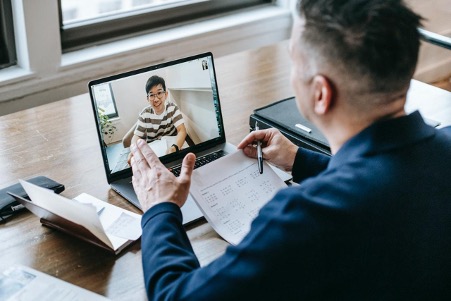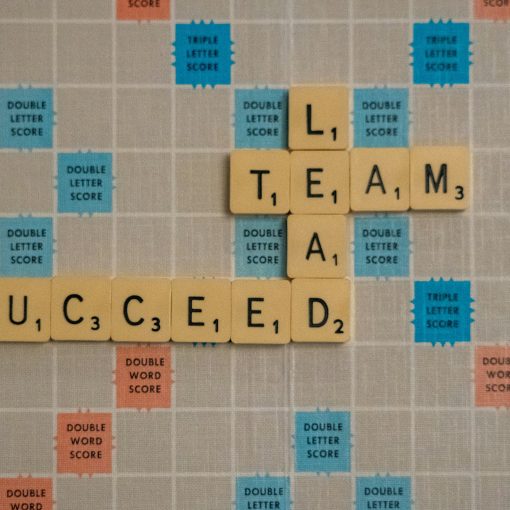When 2017 began, the closest I came to making any resolutions for this year was when I noticed many connected educators asking each other to use the hashtags #oneword and #oneword2017 to come up with one overarching word that would motivate us, guide us, and drive us to be successful this year. After I reflected on what areas of my leadership and educational pursuits I thought I could improve upon, I kicked around a few words that I thought could work until I finally settled on the word SHARE.
I, and probably most educators, got into teaching because we love to work with kids and to share with them information that we have grown to appreciate and master. Many times, it seems, that the appreciation for this content stems from the teacher’s own passion for it. In my case, I had a passion for writing that was sparked in me in high school and only grew stronger when I became involved in journalism and broadcast media in college and early in my career after I graduated. As I have come to understand recently, however, is that there are other reasons for and benefits of this innate passion that inspires us to share what we know with others.
In his book, Lead From The Heart, author and business and leadership expert Mark C. Crowley describes that innate desire to share as an ABUNDANCE MENTALITY. Crowley wrote that, “Leaders with an abundance mentality fully understand that they’re expanded – that their own lights glow brighter and brighter – when they help others to grow and achieve.” This concept is among many that have drawn me into appreciating and studying transformational leadership theories and practices, but that is for another blog post at a later date.
I have been in education now for almost 12 years and nearly half of those have included being in some sort of a coaching role. Although I experienced success as a classroom teacher, it is in this coaching capacity that I seem to shine. I believe that I owe this to my own abundance mentality. Come to think of it, even other leadership roles that I have held in my past including my high school marching band, college marching band and fraternity, and summer camp have helped shape and presented opportunities for me to utilize this abundance mentality.
Speaking of sharing, in his book The Innovator’s Mindset (which has taken the teaching world by storm over the past two years), author and former educator and principal George Couros argues that teachers cannot survive in this day and age without it when he wrote, “Innovation (and enjoyment) flourishes when teachers collaborate to learn and practice new strategies. Isolation is often the enemy of innovation,” and, “Today, isolation is a choice educators make.” According to Couros, there should no longer be any excuse for 21st century teachers to not share and not have an abundance mentality.
So, how do educators share?
Share with others at your school/district
Before I became the instructional coach at my school prior to the start of last year, the position had never even existed before. Not only that, but before last year teachers did not even have common planning time built into their program (at least not since I have worked at my school). It quickly became my mission to encourage more sharing among the staff at my school and within my district. I ventured to figuratively break down the classroom walls that isolate teachers and even students. I created a shared Google Photos album where the staff and I can upload and share photos of the great things they are doing in their classrooms that others may not normally get to see. I also adapted ideas from Robert Kaplinsky‘s movement called #Observeme, where teachers invite others to observe and provide feedback on self-selected elements of the teaching/learning process. I established a process for teachers to participate in learning walks. Plus, this year I helped our district re-think the way we provide professional development, or – as my superintendent would rather us refer to it – adult learning by giving teachers more choice in what they learn and even providing EdCamp style sessions. One thing we made sure to do was to value the amazing talents and experiences of our internal staff over relying on outside presenters.
I would never disagree with any educator who claims to be overworked and underappreciated. It is a tireless and thankless profession much of the time. However, someone once said to me, referring to time management and task prioritization, that people will make time for the things that are important to them. That is why it still amazes me that it takes so much effort for some educators and some schools just to get teachers to collaborate. Experience tells me that sharing, collaborating, and truly capitalizing on that abundance mentality does not become additionally burdensome to educators, it actually helps make their jobs and perhaps even their lives easier.
Share with others outside of your school
Without a doubt the last 14 or so months have been, by far, the most fulfilling of my career to date. Not because I am in a new role at my school, but because I became a connected educator. As George Couros made reference to a choice educators can make to either live in isolation or not, so too do they have a choice to connect with other educators either via social media or other face-to-face settings. When educators go across county lines, state lines, or even go outside their country to connect others with a growth mindset and/or an abundance mentality, amazing things can happen. I have seen it.
I would like to highlight just some of the ways to do this.
Social Media
Twitter has emerged as the leading social media for educator collaboration. Following other connected educators, authors, businessmen and women, and even celebrities allows for an on-demand sharing of ideas and content that is difficult to match anywhere else. Furthermore, another reason Twitter is one of the ultimate sharing tools for educators is because of its chats. Twitter chats typically happen weekly, bi-weekly or monthly and tend to focus on topics of interest to educators. Chats have even been established for teachers in the same state or even the same school or district and around certain content areas or age levels. In each chat, participants can respond to questions, respond to and engage in discussions based on other participants’ responses, or share content related to the chat topic. Some of my favorite chats include #ctedu, #educoach, #arvrinedu, #edumatch, #leadupchat, and the one that I created and moderate, #growthmindsetEDU. To find other chats, visit Participate Learning.
Voxer is getting utilized as a wonderful communication tool for educators to share and capitalize on their abundance mentalities. This walkie talkie smartphone and web-based application allows for sychronous communication to occur among educators. Unlike Twitter or other social media, real-time conversations can happen between and among pairs or groups of people who are not in the same location. My journey to become a connected educator advanced exponentially when I connected with #Edumatch on Voxer. Along with other Voxer groups such as LeadUpChat, EduCoach, PassthescopeEDU, GrowthmindsetEDU, ARVRinEDU and more, I have been able to virtually meet other educators whom I can reach out to any time I want with questions, answers, ideas, or just to chat. They even hold entire EdCamps on Voxer, usually with one in the summer and one in the winter when many groups open up to educators to join during the days of the EdCamp or even longer. The #growthmindsetEDU group that I run actually began as a group that emerged during an EdCamp on Voxer and, due to popular demand, remained active and even spawned into a monthly Twitter chat.
Periscope (or other live streaming services) is also gaining steam as a sharing tool. I have already mentioned how helpful Twitter is for educator collaboration. Well, when Twitter bought Periscope, more possibilities arose. Educators who follow each other on Twitter can also follow each other on Periscope (or Facebook Live, or Instagram Live) to catch live action of what is happening in their classroom or in their school, in professional development settings, on field trips, or anything else they wish to include in a live video stream. I am in a group called PassthescopeEDU that “scopes” each third Thursday of every month around a different topic. We vote on ideas to create a monthly hashtag and then get creative to find ways to do a live stream to discuss the topic. For example, this being the month of March, our hashtag was #marchmadness and we “scoped” about our most valuable (edtech) tools (#MVT) and/or our favorite people (#MVP). Here is my scope!
Snapchat, Instagram, Pinterest, Facebook, Google Plus and other similar social media are also great for sharing and collaborating. Facebook’s, Google Plus’s and Snapchat’s (new) feature that gives users the ability to create group chats, Instagram’s and Facebook’s hashtag feature, and Pinterest’s feature to curate resources by “pinning” to users’ boards are some of the most enticing features of those social media for educators.
Blogging
As much as I love writing and pride myself on my writing ability, this is the area of sharing that I probably struggle with the most. It goes back to the argument about time. I often psych myself out by thinking that writing a blog post includes a time commitment that is hard to budget for. However, as I said before, as I place more value in this style of sharing, the more time I will be willing to devote to it. Plus, there’s nothing that says that blog posts need to be as along as the one you are reading right now. Blog posts can even be short pieces about anything an educator wishes to share publicly. Blogging can not only help the educator who is writing by allowing them share their ideas, thus feeding into their abundance mentality, but it can also certainly benefit the audience. A blog’s readers may gain new ideas, new tools or new perspectives about concepts that have eluded them until they read that blog post. I encourage any educator to seek engaging and interesting blogs to read. Start with this Teach.com daily ranking of education blogs for inspiration.
How do I get in touch with my inner abundance mentality?
In summary, I believe all educators have a passion and knack for sharing information. The trick is to turn that passion into an effort to collaborate with other educators to advance the profession. I have wrestled with my own place in this collaborative process, often thinking that my message is the same one that other educators have heard before, or that I lack original thoughts and/or ideas. To combat this feeling, it important to understand the following thought.
Paramount to one’s abundance mentality is the ability to realize that we all have something to share.
Someone somewhere is waiting for your thought, your idea, your message. That person could be in your school or district, in your state, in your country, or somewhere else in the world. The exciting this is that you never know whom your sharing will reach, or on what level it will reach them. But rest assured that it will be received and it will be appreciated.





